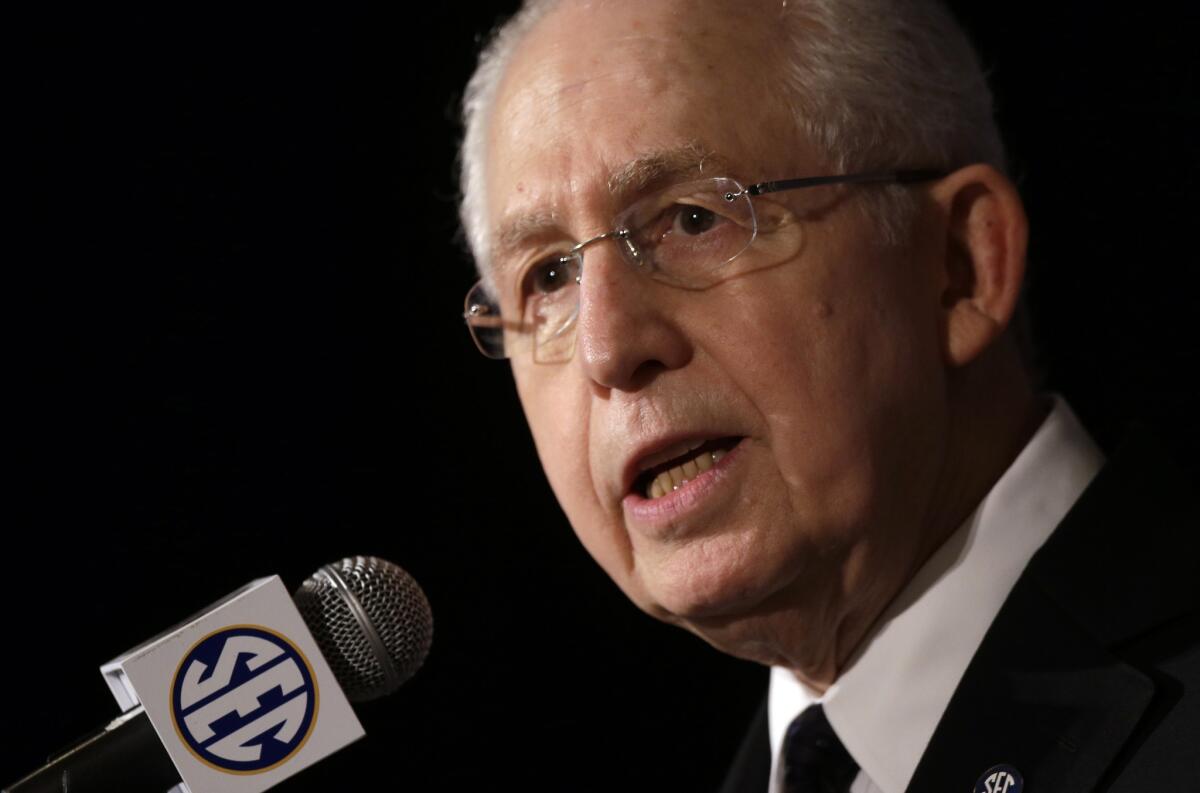NCAA proposal would give power conferences more autonomy

Southeastern Conference Commissioner Mike Slive, in his annual state-of-the-league address this week in Alabama, quoted Dwight D. Eisenhower, Nelson Mandela and Winston Churchill to emphasize the importance of fundamentally reforming intercollegiate athletics.
Slive’s oration may have been slightly over the top. However, his message to the NCAAwas clear: Change or else.
“We are not deaf to the din of discontent,” he said.
On Friday, Slive received an indication that the change he desires is coming. The NCAA steering committee released details of a proposal that would grant more autonomy to the five power football conferences: the SEC, Pac-12, Atlantic Coast, Big Ten, and Big 12.
A vote on the proposed changes will come Aug. 7, but Friday’s NCAA announcement seemingly paves the way for passage.
The proposal lowers the threshold for the “power five” football conferences to pass legislation. Before, the votes of the five most powerful football leagues could be thwarted by the larger body of 350 schools in Division I. Under the new proposal, they would be able to implement legislation without the votes of smaller schools on some issues.
The “power five” leagues, which have financially distanced themselves from the rest of Division I through lucrative broadcast deals, had threatened to break away from the NCAA if not granted more autonomy.
The new thresholds, as proposed, allow the power conferences to pass legislation that would grant a “full cost of attendance” stipend to student-athletes. The specific cost would vary by school. Schools from smaller conferences could choose to adopt similar legislation.
A similar plan, proposed by Slive and the SEC in 2011, was voted down.
“It is critical for the NCAA to change,” Slive said this week, “and to change in accordance with the vision proposed for the 21st century by the five conferences.”
The proposal would simplify the NCAA’s complicated labyrinth of committees and sub-committees. The new plan would create a new 24-member oversight board, run mainly by presidents, and another rule-making council comprised mostly of athletic directors. There would be athletes represented on both committees.
“The Division I membership overall and the steering committee in particular worked hard to create a structure that will allow the division to operate more simply and inclusively,” NCAA President Mark Emmert said in a release. “It shows a clear commitment to support student-athletes and allow them not only a place at the table but a voice in the process.”
More to Read
Get our high school sports newsletter
Prep Rally is devoted to the SoCal high school sports experience, bringing you scores, stories and a behind-the-scenes look at what makes prep sports so popular.
You may occasionally receive promotional content from the Los Angeles Times.







